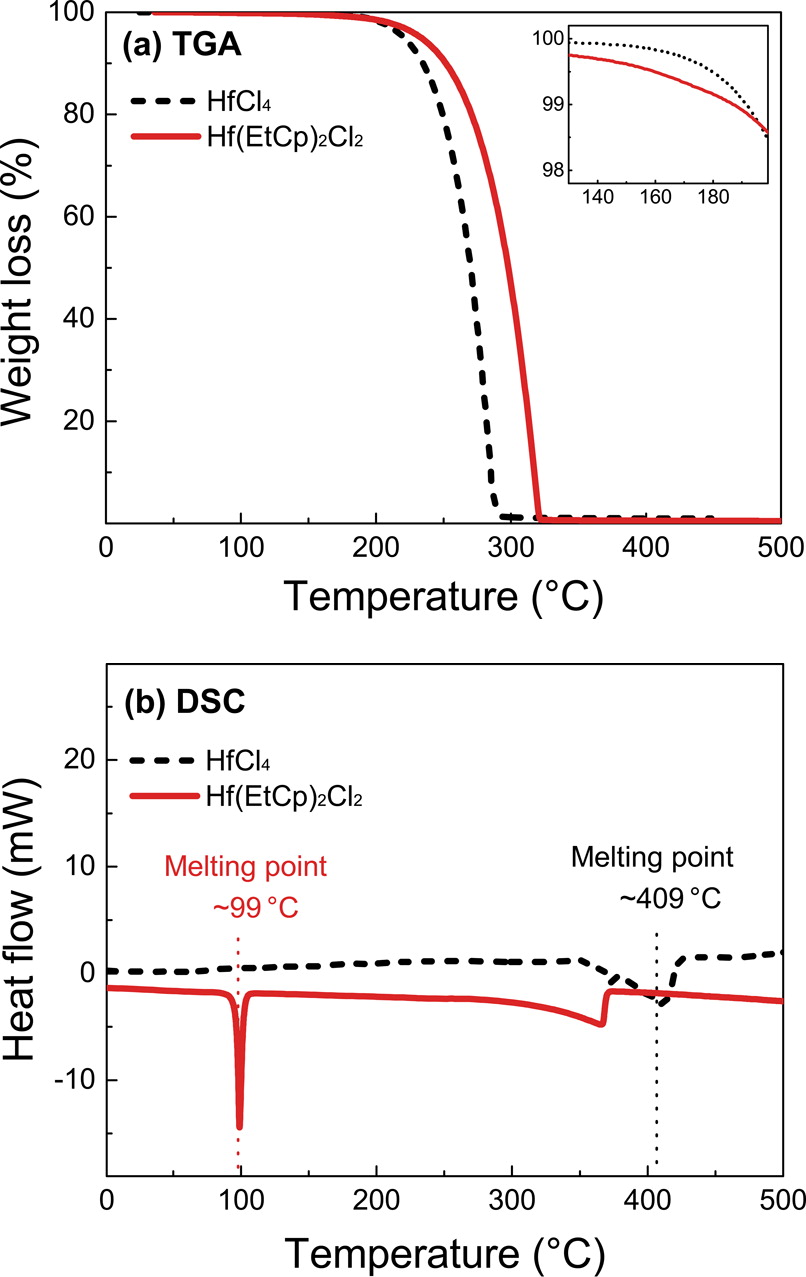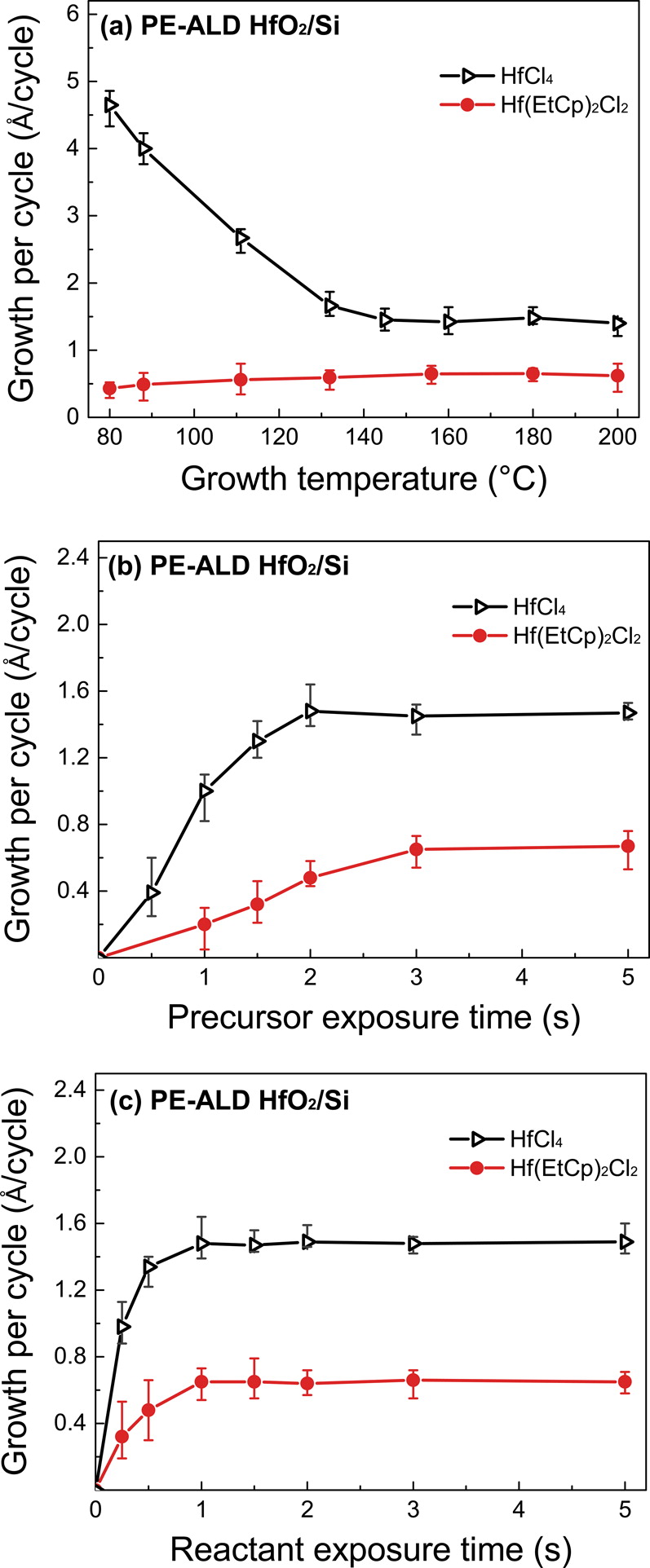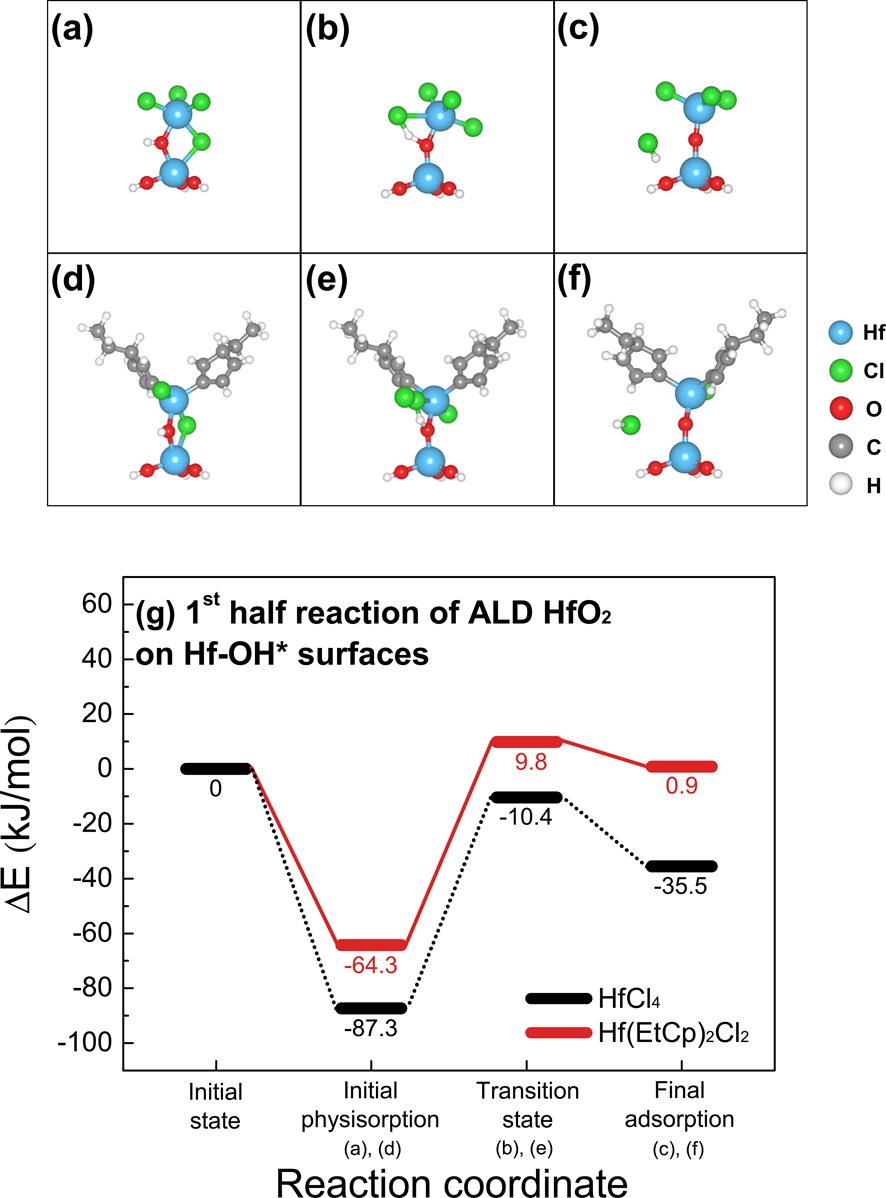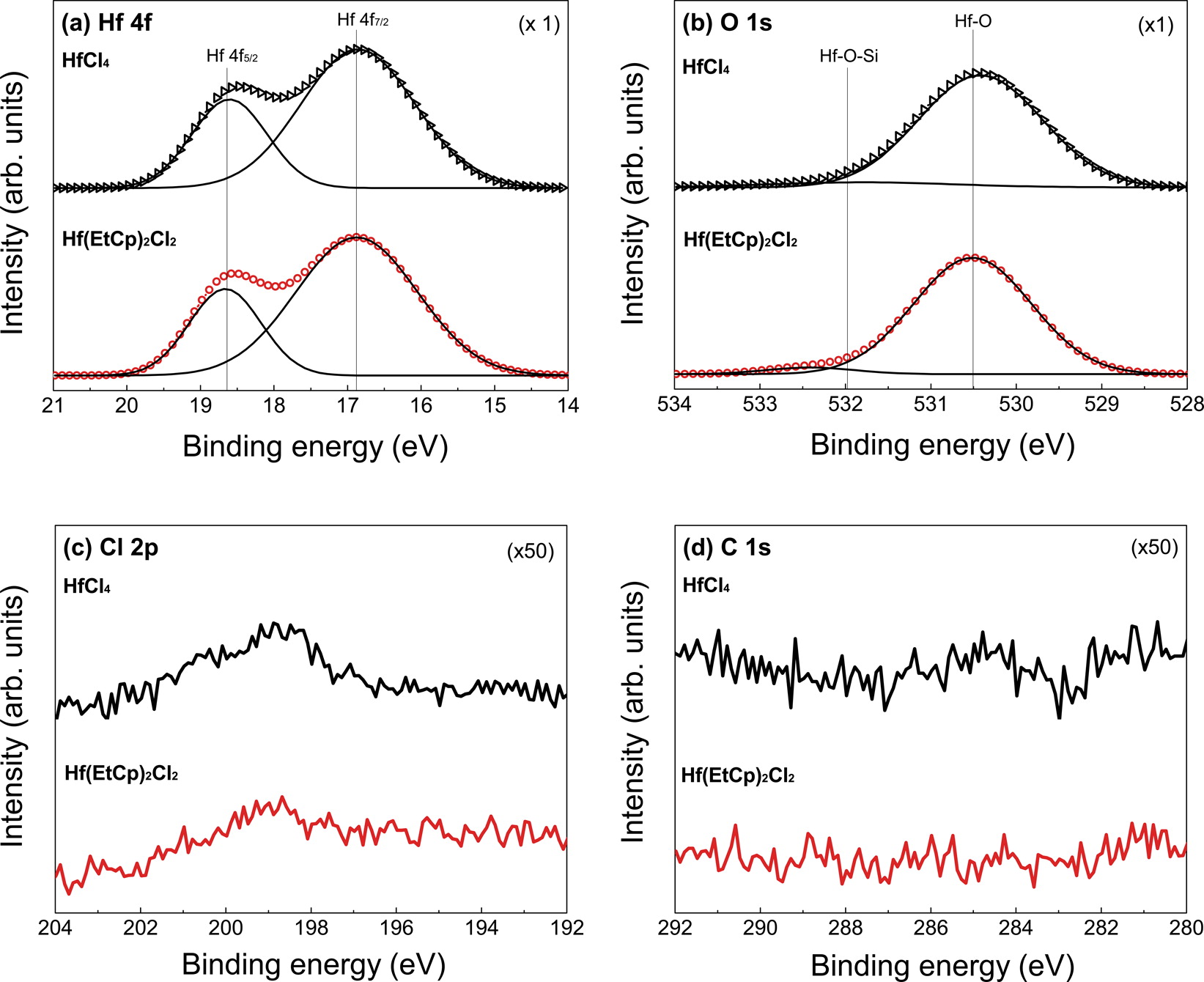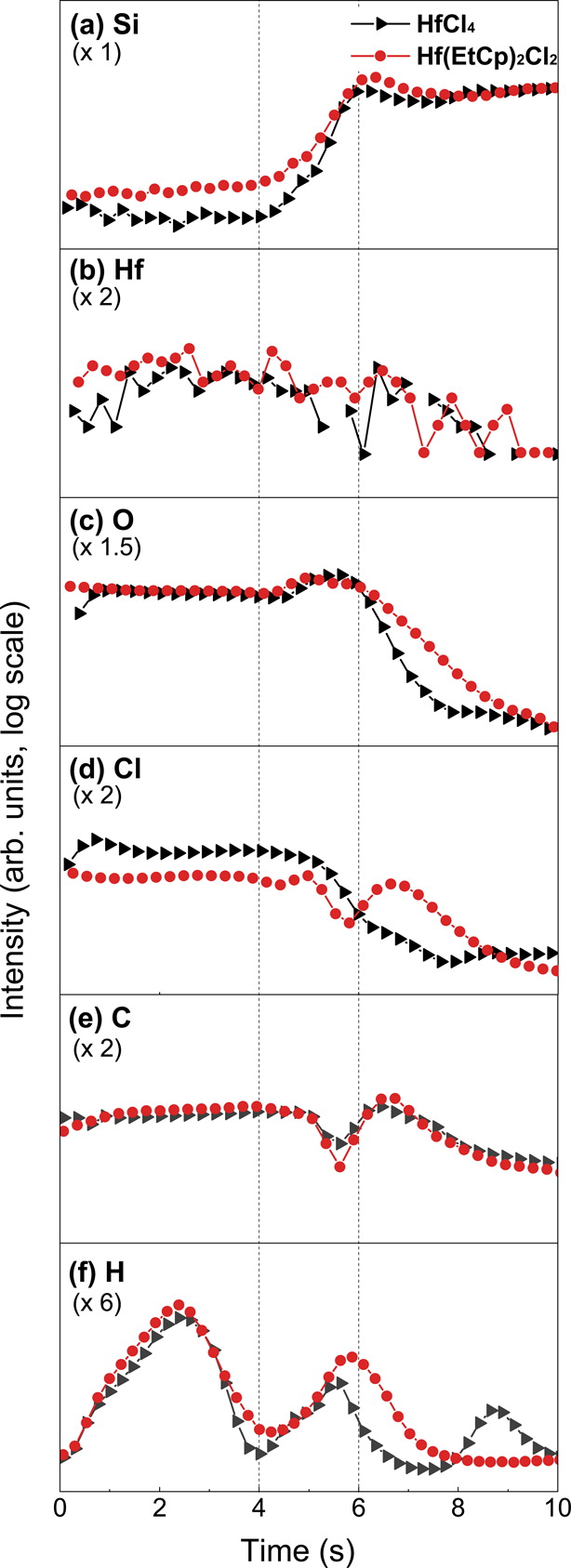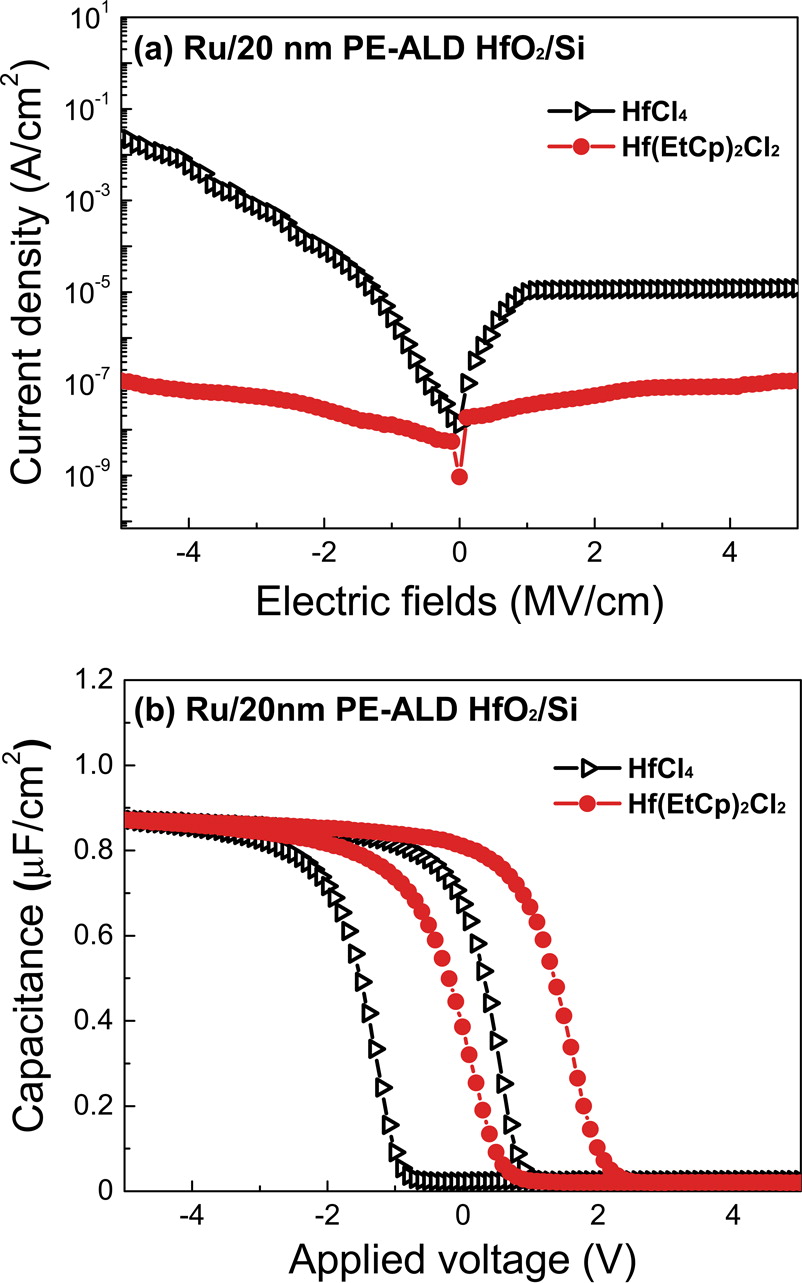Back To Listings
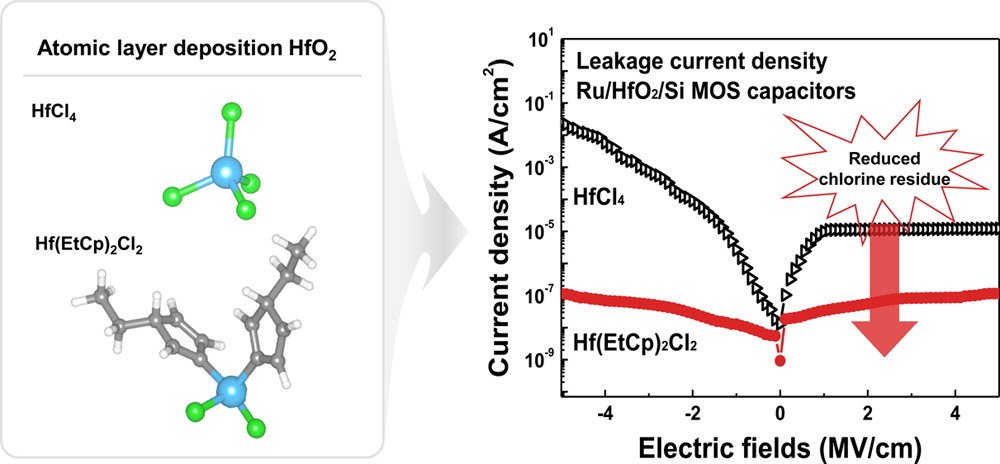
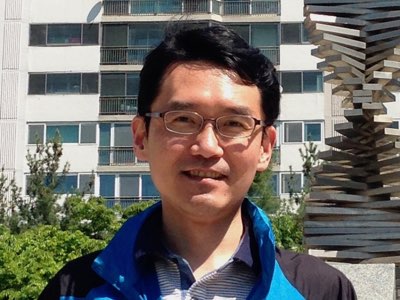

- First authors: Bo-Eun Park
- Corresponding authors: Han-Bo-Ram Lee, Hyungjun Kim
- Whole authors: Bo-Eun Park, Il-Kwon Oh, Chang Wan Lee, Gyeongho Lee, Young-Han Shin, Clement Lansalot-Matras, Wontae Noh, Hyungjun Kim, Han-Bo-Ram Lee
- Authors from M3L: Young-Han Shin
Atomic layer deposition (ALD) of HfO2 is a key technology for the application of high dielectric constant gate dielectrics ranging from conventional Si devices to novel nanodevices. The effects of the precursor on the growth characteristics and film properties of ALD HfO2 were investigated by using hafnium tetrachloride (HfCl4) and bis(ethylcyclopentadienyl)hafnium dichloride (Hf(EtCp)2Cl2, Hf(C2H5C5H4)2Cl2) with O2 plasma reactant. The growth characteristics were significantly affected even by simply changing the precursor. Theoretical calculations utilizing geometrical information on the precursor and density functional theory revealed that the steric demands of the precursor ligands have a dominant effect on the different growth characteristics rather than the reaction probability of the precursor on the surface. The chemical compositional analysis results showed that the Cl residue in the HfO2 films was reduced by using Hf(EtCp)2Cl2 due to the lower number of Cl atoms in each Hf precursor molecule and the relieved bridge formation of Hf–Cl–Hf bridge on the surface compared to HfCl4. The electrical property measurement results showed significantly improved insulating properties in HfO2 using Hf(EtCp)2Cl2 compared to HfCl4 due to the low concentration of Cl residue in the film. These results provide broad insights to researchers who are interested in the fabrication of high quality dielectric layers to achieve better device performance and overcome physical limitations in the nanoscale regime.
Authors from M3L

